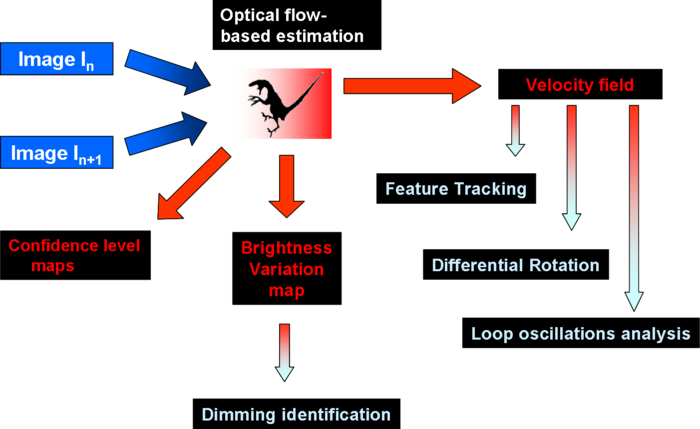
A motion analysis algorithm for EUV sequences of the solar corona
 |
VELOCIRAPTOR A motion analysis algorithm for EUV sequences of the solar corona |
What is Velociraptor ?Velociraptor is an algorithm that analyses solar extreme-ultraviolet images, as recorded by the Extreme ultraviolet Imaging Telescope (EIT) on board the Solar and Heliospheric Observatory (SoHO) and by the Transition Region and Coronal Explorer (TRACE). It simultaneously estimates the apparent motion vector and the variation in brightness from two successive images. It is based on a multiscale optical-flow algorithm derived from a local gradient-based technique. Velociraptor can be used to study the coronal differential rotation and to identify coronal events as regions exhibiting a significant brightness variation or an outstanding velocity field. The range of potential interests includes, but also extends beyond, ondisc signatures of flares and coronal mass ejection (CME). It encompasses, for example, studies of nanoflares and macrospicules, coronal seismology, MHD and EIT wave investigations, precursors of space weather events...For more details on the algorithm, contact us. |

| Last Modified: 2006 December 14 - Samuel Gissot and J.-F. Hochedez | Velociraptor is supported by BELSPO through ESA/PRODEX funding |
|---|